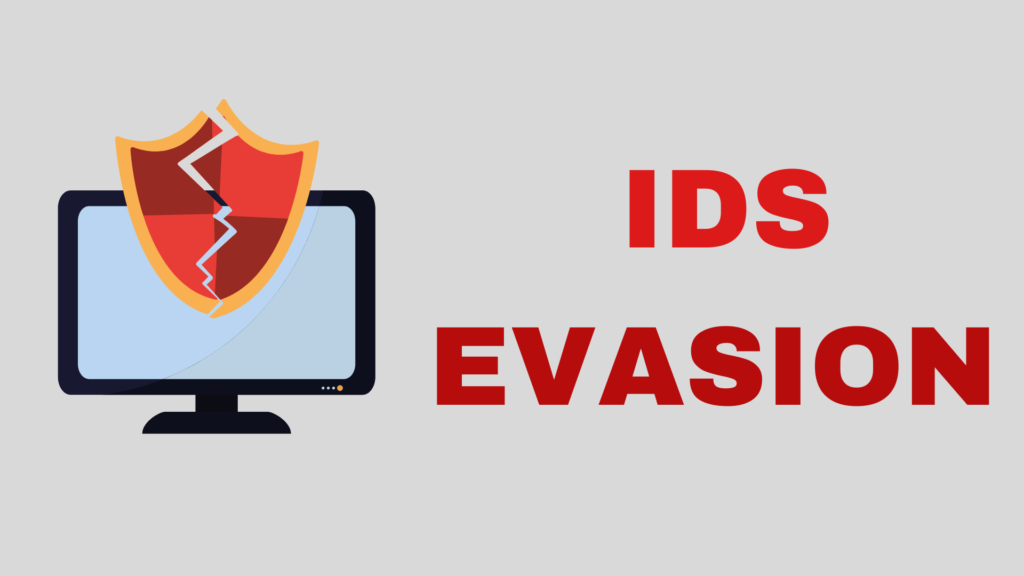Introduction
In today’s digital world, web-based applications play a crucial role in the functioning of many organizations. However, these applications are also vulnerable to security threats that can have serious consequences. Common web application vulnerabilities can lead to data breaches, theft of sensitive information, and disruption of business operations.
It is imperative that organizations understand the common vulnerabilities that exist in web applications, and take the necessary steps to identify and address these security flaws. In this article, we will provide an overview of common web application vulnerabilities and the importance of addressing these vulnerabilities to maintain the security and integrity of web-based assets. We will also discuss the most common vulnerabilities in web applications, including SQL Injection, Cross-Site Scripting (XSS), and Cross-Site Request Forgery (CSRF).
Definition of Web Application Vulnerabilities
Web application vulnerabilities refer to security flaws that exist within web-based applications, which can be exploited by malicious actors. These vulnerabilities can be caused by a variety of factors, including coding errors, misconfigured systems, and inadequate security controls.
Importance of Identifying and Addressing Vulnerabilities
Identifying and addressing web application vulnerabilities is crucial for maintaining the security and integrity of an organization’s web-based assets. These vulnerabilities can lead to data breaches, theft of sensitive information, and disruption of business operations. By addressing these vulnerabilities, organizations can reduce the risk of security incidents and protect their customers, employees, and reputation.
Overview of the Most Common Vulnerabilities in Web Applications
There are a number of common vulnerabilities that exist in web applications. Some of the most common include SQL Injection, Cross-Site Scripting (XSS), Cross-Site Request Forgery (CSRF), and Remote Code Execution (RCE). These vulnerabilities can be exploited by attackers to gain unauthorized access to sensitive information, inject malicious code, and carry out other malicious actions.
SQL Injection
What is SQL Injection
SQL Injection is a type of web application vulnerability that exploits the database layer of the application. It allows an attacker to manipulate the database by injecting malicious code into an application’s SQL query. This type of vulnerability can be used to steal sensitive information, modify data, or even delete entire databases.
How it occurs
SQL Injection occurs when an attacker inputs malicious code into an application’s input fields, such as a search box or login form. The application then executes the malicious code as a valid SQL query, allowing the attacker to access sensitive information or modify the database.
Risks associated with SQL Injection
The risks associated with SQL Injection are numerous and severe. Attackers can use SQL Injection to steal confidential information such as login credentials, financial data, and sensitive personal information. Additionally, attackers can use SQL Injection to modify or delete entire databases, which can disrupt business operations and lead to significant financial losses.
Preventative measures to protect against SQL Injection
Fortunately, there are preventative measures that can be taken to protect against SQL Injection. Input validation, using parameterized queries, and using web application firewalls are some of the measures that can help prevent SQL Injection attacks. It is also important to regularly update software and systems to prevent vulnerabilities from being exploited.
In conclusion, SQL Injection is a serious web application vulnerability that must be addressed to maintain the security and integrity of an organization’s data and systems. By understanding the risks associated with SQL Injection, organizations can take the necessary steps to protect against this type of attack.
Cross-Site Scripting (XSS)
What is Cross-Site Scripting
Cross-Site Scripting, also known as XSS, is a type of web application vulnerability that allows an attacker to inject malicious scripts into a web page viewed by other users. This type of vulnerability can be used to steal sensitive information, redirect users to malicious websites, or even launch phishing attacks.
How it occurs
XSS occurs when an attacker inputs malicious code into an application’s input fields, such as a comment section or search box. The malicious code is then executed by the browser of the user who views the infected web page.
Risks associated with XSS
The risks associated with XSS are numerous and can have a significant impact on both individual users and organizations. Attackers can use XSS to steal sensitive information such as login credentials, financial data, and sensitive personal information. Additionally, XSS can be used to launch phishing attacks or redirect users to malicious websites, which can spread malware and compromise the security of their devices.
Preventative measures to protect against XSS
Preventative measures to protect against XSS include input validation, encoding user input, and using Content Security Policy (CSP). Regular software updates can also help prevent XSS attacks by fixing known vulnerabilities.
In conclusion, Cross-Site Scripting (XSS) is a serious web application vulnerability that must be addressed to maintain the security and privacy of users and organizations. By understanding the risks associated with XSS, organizations can take the necessary steps to protect against this type of attack.
Cross-Site Request Forgery (CSRF)
What is Cross-Site Request Forgery
Definition
Cross-Site Request Forgery, also known as CSRF, is a type of web application vulnerability that allows an attacker to perform unauthorized actions on behalf of another user. This type of vulnerability can be used to steal sensitive information, alter data, or even launch phishing attacks.
How It Occurs
CSRF occurs when an attacker tricks a user into making a malicious request to a web application. This can happen through a variety of methods, such as sending a phishing email with a malicious link, or by tricking a user into clicking a link that makes a malicious request on their behalf.
Risks of CSRF
The risks associated with CSRF are significant, as attackers can use this vulnerability to steal sensitive information, alter data, or even launch phishing attacks. This type of attack can have a major impact on both individual users and organizations, leading to financial losses, data breaches, and reputational damage.
Preventative measures
Preventative measures to protect against CSRF include using anti-CSRF tokens, implementing HTTP-only and secure flags on cookies, and using Same-Site cookies. Regular software updates can also help prevent CSRF attacks by fixing known vulnerabilities.
In conclusion, Cross-Site Request Forgery (CSRF) is a serious web application vulnerability that must be addressed to maintain the security and privacy of users and organizations. By understanding the risks associated with CSRF, organizations can take the necessary steps to protect against this type of attack.
Insecure Direct Object References
Definition
Insecure Direct Object References, also known as IDOR, is a type of web application vulnerability that occurs when a user is able to access or manipulate sensitive data without proper authorization. This type of vulnerability can be exploited by attackers to gain access to sensitive information, alter data, or even cause harm to a system.
How It Occurs
IDOR occurs when a web application fails to properly validate user input, allowing an attacker to manipulate the URL or form data to access or modify sensitive data. This type of vulnerability is often found in web applications that use sequential IDs to reference objects, such as user accounts or orders.
Associated Risks
The risks associated with IDOR are significant, as attackers can use this vulnerability to steal sensitive information, alter data, or cause harm to a system. This type of attack can have a major impact on both individual users and organizations, leading to financial losses, data breaches, and reputational damage.
Preventative measures
Preventative measures to protect against IDOR include using proper access controls, validating user input, and using encryption to secure sensitive data. Regular software updates can also help prevent IDOR by fixing known vulnerabilities.
In conclusion, Insecure Direct Object References (IDOR) is a serious web application vulnerability that must be addressed to maintain the security and privacy of users and organizations. By understanding the risks associated with IDOR, organizations can take the necessary steps to protect against this type of attack.
Remote Code Execution (RCE)
Definition
Remote Code Execution, also known as RCE, is a type of web application vulnerability that allows an attacker to execute code on a remote system. This type of vulnerability occurs when a web application fails to properly validate user input, allowing an attacker to inject malicious code into the system.
How It Occurs
RCE occurs when a web application takes user input and executes it as code without proper validation. This can allow an attacker to inject malicious code into the system, giving them full control over the affected system. This type of vulnerability can be found in web applications that use dynamic content generation, such as scripts or code snippets.
Associated Risks
The risks associated with RCE are severe, as attackers can use this vulnerability to steal sensitive information, cause harm to a system, or even launch a full-scale attack on an organization. This type of vulnerability can lead to data breaches, financial losses, and serious reputational damage.
Preventative measures
Preventative measures to protect against RCE include validating user input, using proper access controls, and keeping software updated with the latest security patches. Regular security audits and penetration testing can also help identify and prevent RCE vulnerabilities.
In conclusion, Remote Code Execution (RCE) is a serious web application vulnerability that must be addressed to maintain the security and privacy of users and organizations. By understanding the risks associated with RCE, organizations can take the necessary steps to protect against this type of attack and ensure the security of their systems.
Broken Authentication and Session Management
Definition
Broken Authentication and Session Management is a vulnerability that occurs when the mechanisms that are used to authenticate and manage user sessions are flawed or inadequate. This can lead to a variety of security risks, such as unauthorized access to sensitive information, impersonation, and man-in-the-middle attacks.
How It Occurs
One common cause of Broken Authentication and Session Management is the use of weak passwords, or the storage of passwords in clear text. This can result in the exposure of passwords and other sensitive information, which can be used to gain unauthorized access to sensitive systems or data.
Associated Risks
Another common cause is the lack of proper session management. This can result in the exposure of session IDs, which can be used to hijack sessions and gain unauthorized access to sensitive information.
Preventative measures
To prevent Broken Authentication and Session Management, it is important to use strong passwords, store passwords securely, and implement proper session management practices. This can include the use of secure, encrypted session IDs, the use of two-factor authentication, and the implementation of proper session timeouts and logging.
By taking these preventative measures, organizations can help protect against the risks associated with Broken Authentication and Session Management, and ensure that their systems and data are secure.
Insecure Cryptographic Storage
Definition
Insecure Cryptographic Storage refers to the improper storage of sensitive data such as passwords, credit card numbers, and personal information.
How It Occurs
This vulnerability occurs when sensitive information is stored in a way that is easily accessible to attackers. This can include storing data in clear text, using weak encryption methods, or not properly securing the storage location.
Associated Risks
Insecure Cryptographic Storage puts sensitive information at risk of being accessed, stolen, or misused by unauthorized individuals or entities. This can result in identity theft, financial fraud, and a variety of other security threats.
Preventative measures
To protect against Insecure Cryptographic Storage, it is essential to implement strong encryption methods and secure storage locations. Sensitive data should be encrypted both in transit and at rest, and access to encrypted data should be restricted to authorized personnel only. Additionally, it is important to regularly review and update security measures to ensure they remain effective.
Insufficient Logging and Monitoring
Definition
Insufficient Logging and Monitoring refers to a lack of proper logging and monitoring systems in place to detect and respond to security incidents.
How It Occurs
This vulnerability can occur when organizations do not properly track and monitor access to sensitive data and systems, or when they do not have the ability to detect and respond to security incidents in a timely manner.
Associated Risks
Insufficient Logging and Monitoring leaves organizations vulnerable to undetected security breaches and data theft. This can result in serious financial and reputational damage, as well as potential legal liabilities.
Preventative measures
To protect against Insufficient Logging and Monitoring, organizations should implement robust logging and monitoring systems. These systems should be capable of detecting and responding to security incidents in real-time, and should be regularly reviewed and updated to ensure they remain effective. Additionally, organizations should develop and implement response plans for potential security incidents, and provide ongoing training for employees to ensure they understand the importance of proper logging and monitoring.
Conclusion
In conclusion, web application vulnerabilities can have devastating effects on both individuals and organizations. These weaknesses can lead to sensitive information being stolen, systems being compromised, and loss of business reputation. As the digital world continues to grow and evolve, it is crucial for individuals and organizations alike to prioritize the security of their web applications. By understanding and identifying common vulnerabilities, such as SQL Injection, Cross-Site Scripting (XSS), Cross-Site Request Forgery, Insecure Direct Object References, Remote Code Execution, Broken Authentication and Session Management, Insecure Cryptographic Storage, and Insufficient Logging and Monitoring, we can better equip ourselves with the tools and knowledge to prevent potential threats.
It is also important to note that cyber security is an ever-evolving field and staying updated on the latest trends and tactics is crucial in staying ahead of potential threats. This includes regularly conducting penetration testing, updating security protocols, and continually educating ourselves and our team members on the importance of web application security.
In summary, protecting against web application vulnerabilities is a top priority in today’s digital landscape. By taking a proactive approach and staying vigilant, we can ensure the safety and security of our online systems and the protection of sensitive information. The importance of web application security cannot be overstated, and by prioritizing this issue, we can create a safer and more secure digital world for all.


